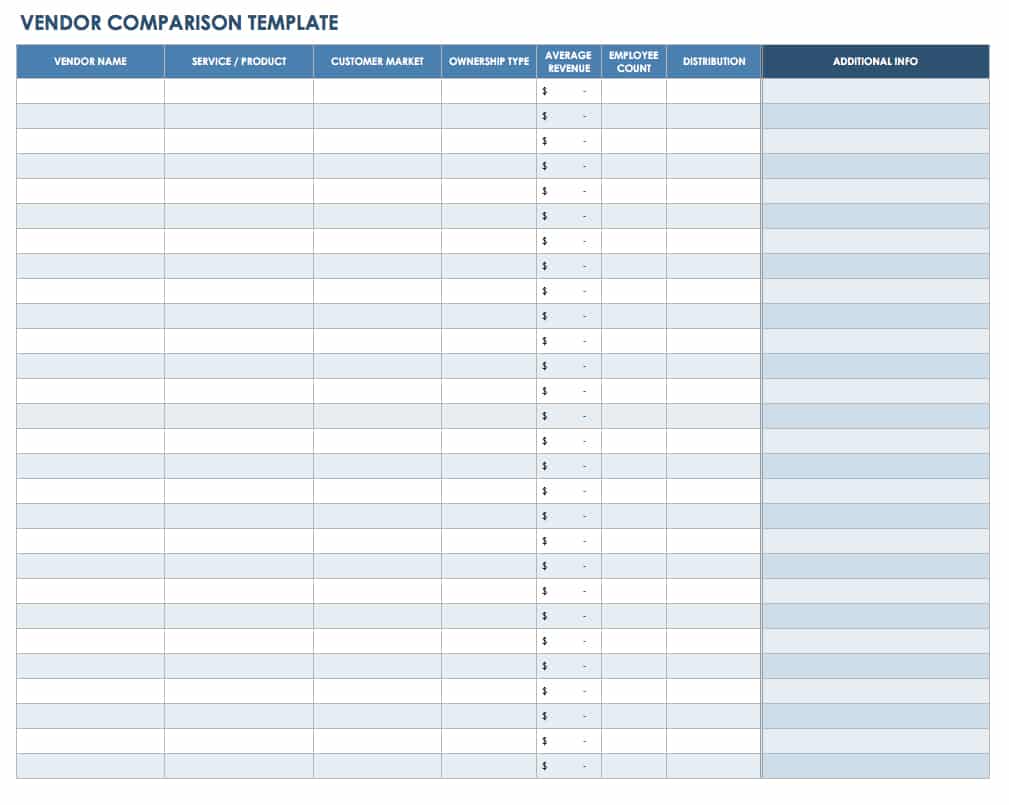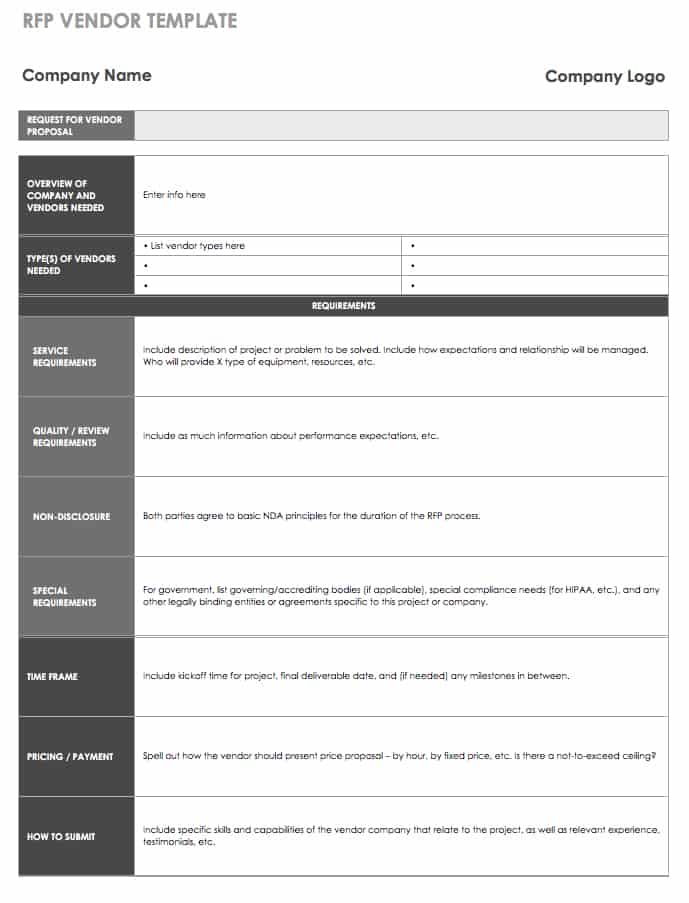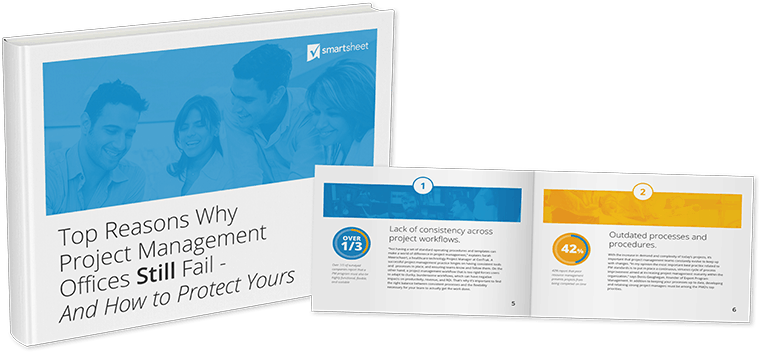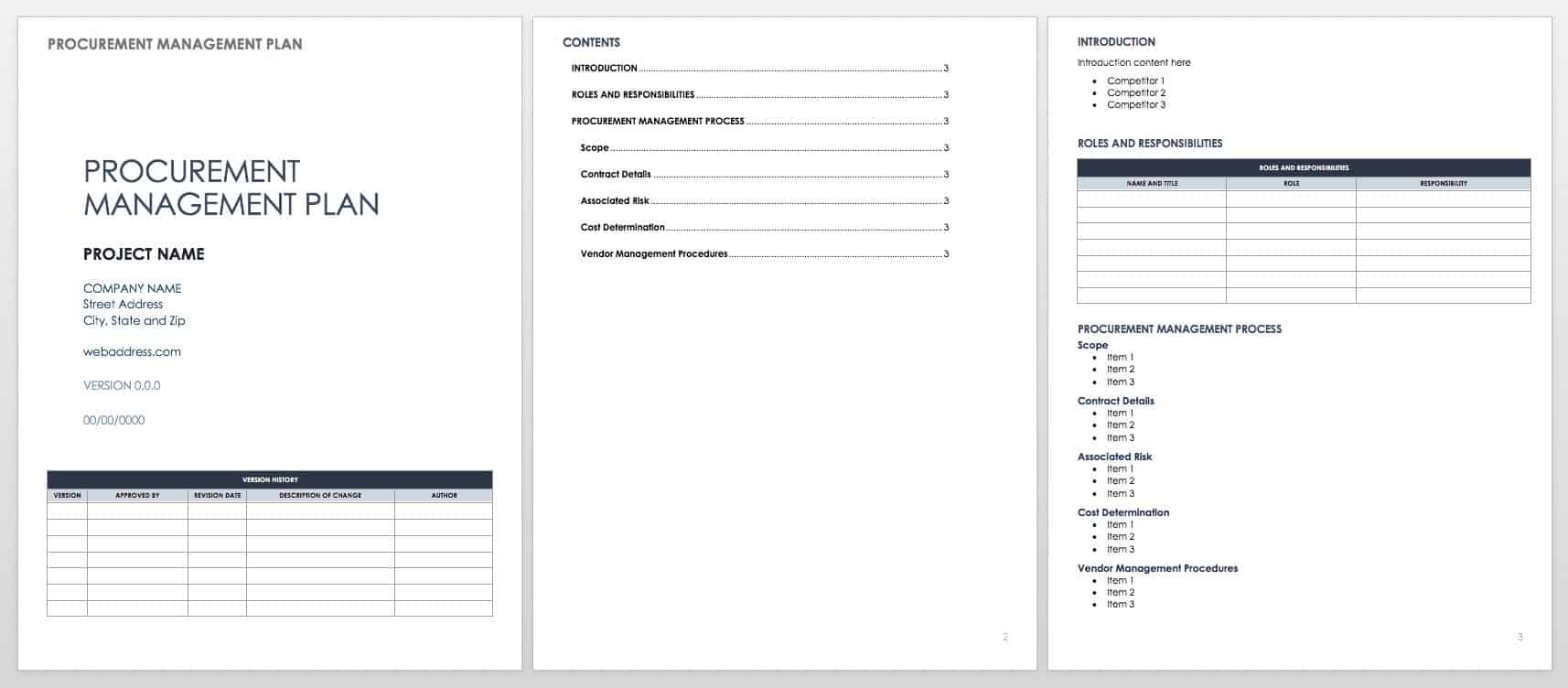What Is the Purpose of Procurement?
Procurement encompasses the strategic and operational processes that allow businesses to buy the necessary items to make and deliver products to customers. These components can be raw materials, equipment, office supplies, or services. Because the elements of procurement are quantifiable, companies can calculate the actual costs of doing business.
The procurement process, however, is much more than simply purchasing items: It is a partner to overall operations and project management that can deliver cost containment and efficiency for the organization. Procurement processes are designed to support and reflect the pillars of organizational goals, such as company identity and place in the market. Therefore, procurement's place and purpose in overall company success is critical.
See how Smartsheet can help you be more effective
Watch the demo to see how you can more effectively manage your team, projects, and processes with real-time work management in Smartsheet.
What Is the Meaning of Procurement Management?
Procurement management provides the logical basis and systematic procedures for acquiring the goods and services a company needs to operate. An effective procurement process combines both a strategic approach and operational controls. There are essentially four areas to consider:
-
Planning: Identifying, selecting, negotiating, and contracting vendors and suppliers
-
Purchasing: Orders and invoicing
-
Following: Monitoring, receiving, and inventory
-
Reconciling: Paying, reconciling, and closing orders
The management function of procurement takes care of the discrete task-oriented projects that are aligned with purchasing, receiving, and payment, as well as the processes of contract negotiation, vendor criteria and selection, and monitoring for compliance and quality.
You can use the template below to compare vendors before you commit to a partnership. It includes space to describe the services provided as well as information about the company, such as customer market, average revenue, and distribution details.
What Is Procurement Management in Project Management?
Procurement is a vital element of project management, but it involves numerous steps that may not be easily handled by a project manager alone. Though project managers may not be directly responsible for fulfilling supply orders, they should have enough knowledge to understand the process, especially if they are responsible for the project budget.
The project manager can be an important resource to procurement negotiators as they work to qualify and partner with the right vendors on price and availability. Communicating order size expectations, specifications, and requirements to suppliers can also mitigate work slowdowns and support project milestones. The right partnership, strategy, and information between project managers and procurement negotiators can positively impact costs associated with the project.
The Difference Between Procurement and Purchasing
The most confusing element in the procurement process is the role of purchasing. Many organizations use the terms interchangeably or simply lump the entire process under a purchasing department or buyer. However, there are distinct roles for the two processes.
Procurement is an umbrella term for a process that provides the answers to important questions such who to use, what items and time frames are preferred, terms of payment, and other critical elements in business arrangements and transactions. Companies establish the procurement plan with upfront research that identifies and finds the requested supply item(s) and qualifies potential contractors. Procurement is also responsible for lease agreements and contract negotiations.
Procurement is also a key contributor when companies decide to make or buy a critical component. The supporting purchasing process will enact and execute the order, but this is made possible by the upfront strategic decisions established during procurement. With procurement guidelines in place, purchasing can streamline and automate regular orders for timely and cost-effective delivery.
The Intricacies of Procurement Management Processes
Sourcing the right products or services to support business goals is a necessary, yet complex function. Businesses with a defined procure-to-pay lifecycle that is appropriate for the size of their organization enjoy additional benefits.
Here are the basic steps in procurement management:
-
Plan: Identify needs, define policies, and educate/train.
-
Align: Allocate people resources, supply partners, and other resources.
-
Procure: Define supply partners based on qualifications (including costs) and request for proposals (RFP)s.
-
Manage: Schedule procurements and analyze for continuous improvement, including examining milestones, supplier performance against contract, conflict resolution, and quality and contract adjustments.
Before a business places an order, a procurement professional will identify the requirements for the supply or service. They will then search the marketplace for suppliers. When a supplier is identified, the procurement specialist takes into consideration the ability to meet demand, the quality of product, and the supplier’s geography. During the qualification process, the procurement team also evaluates storage availability, receiving capabilities, and inventory. Project managers can use all of this information to effectively allocate resources and manage scheduling or deadlines.
Use this RFP template with a current supplier or new vendor to specify the requirements and expectations for a project. Providing vendors with a thorough RFP can help foster a successful relationship from the start.
Download RFP Vendor Template
Once you identify the supplier, you can begin procuring goods. This may follow a process similar to the one below:
-
Submit purchase request for internal verification.
-
Authorize/approve purchase request.
-
Send purchase order to supplier.
-
Supplier acknowledges order.
-
Communicate status to stakeholders, including shipment notification.
-
Receive goods/services from supplier.
-
Review and accept goods.
-
Record and process invoice, including a three-way match between vendor’s invoice, purchase order, and receiving report.
-
Approve payment to supplier.
Large enterprise order fulfillment often requires a different kind of vendor/supplier than a business that may need an occasional fulfillment.
Other areas of procurement include the development of policies or procedures that support accessibility for the disabled and Green Public Procurement, which places additional value on how procurement decisions impact human health and the environment.
How effective are your company’s project management efforts?
Uncover eight challenges impacting the effectiveness of your project management office, and get expert tips on how to overcome these challenges.
Building a Procurement Management Plan
All management plans start with assessing a need that follows or aligns with business objectives. In procurement, the team then develops a process lifecycle that defines the sourcing and delivery of direct and indirect products and services. The procurement management plan details contracts, delivery timeframes, necessary documentation, associated purchasing, and predefined suppliers, as well as vendors and contractors and how they performed and were managed.
Here are some steps to take as you build a procurement management plan:
-
Identify elements already in place, such as systems, documents, or vendor agreements.
-
Perform a “make or buy” market analysis.
-
Assess supporting elements, such as contracts, automation, and software.
-
Develop selection criteria to find and qualify vendors through RFPs or RFQs, negotiations, and contracts.
-
Define a contract and statement of work (SOW) for each type of procurement.
-
Build a purchasing process that automates ordering, delivery, and payment.
-
Document everything.
-
Measure the success of the acquisition process. This includes assessments that audit for fraud or misappropriation, identify areas for innovation, and pinpoint risks to the supply chain.
Your procurement management plan should also address contract development. Different types of contracts help make the relationship between the business and vendor as fair as possible. These include the following:
-
Fixed price: The client always pays the same amount regardless of work effort.
-
Cost reimbursable: The supplier charges the cost of doing the work plus a fee for profit.
-
Time and materials: The supplier charges a rate for the time spent plus all material utilized.
Here is a procurement management plan that you can use to manage and track all your procurement-related activities.
Download Procurement Management Plan - WORD
Procurement Management in the Business
A procurement management process supports overall operational requirements by delivering the right products at the right time and in the right amount. The Chartered Institute of Procurement and Supply (CIPS) discusses the “five rights” of purchasing and procurement: Goods and services should be of the right quality, in the right quantity, delivered to the right place, at the right time, and obtained at the right price.
Every department in an organization depends on the timely, accurate delivery of the tools and services they need to perform their jobs. With the help of the procurement team, individual departments won’t have to coordinate their own sourcing and acquisition. This not only streamlines the business process, but also simplifies the relationship with the vendors, which saves both time and money.
Whether a company procures services or materials for software engineering, a construction company, or a manufacturer building the latest must-have toy for the Christmas season, the process is very similar. The procurement team acts as the primary contact with the suppliers that deliver goods and services. They work directly with outsourcing entities to identify key opportunities that enhance operations. It is part of the job of the procurement team to develop and maintain outside relationships that benefit project management and operational efficiencies.
Dealing with Procurement Fraud
Fraud can be extremely disruptive to the procurement management process. What constitutes fraud? It is any form of manipulation to the procurement process for dishonest gain. An often-used example is a kickback or "thank you" payment made to a decision maker for selecting a specific supplier. It can also be someone benefiting from insider information.
Other forms of fraud include inflated invoicing, dividing requirements to avoid contract review, collusion, sole-source contracting, exclusion of qualified vendors, or delivery of inferior goods. Fraudulent payment practices can be as simple as bestowing a favor, providing a valued gift, or making direct cash payments to assure a procurement order or contract is awarded.
While fraud can exist in almost every business – public, private, or government – there are ways to mitigate risk. The first step in prevention is having strong procedures and controls that educate employees and hold them accountable. Policies that encourage the reporting of fraud also need effective detection techniques that can range from automated alerts to regular auditing and internal segregation of duties and responsibilities.
To Make or to Buy: How to Decide?
There are times when a business will need to decide whether to make or buy a product or service that is necessary in the procurement process. This is especially critical as companies scale up. Building or authoring in-house solutions is needed when the workforce is idle, proprietary information is at stake, or a business wants to retain full control, but more and more cost-effective solutions for common problems are available through outside contract or purchase. A thorough analysis of pros and cons is the best way to make this decision. Consider the following:
-
Operational abilities
-
Timelines
-
Availability of resources
-
Cost
-
Control factors
-
Internal capabilities
These elements take into consideration the proprietary needs, organizational capabilities, and the perceived effectiveness or value of the solution. Purchases with unusual elements such as licensing or leasing also benefit from the make-or-buy analysis criteria.
Tips for Implementing a Successful Procurement Management Program
A strong procurement program is important to the bottom line and embraces the elements of both business strategy and operational effectiveness. Once you identify your requirements, you will do the following:
-
Identify the right suppliers: Focus on overall value rather than price to make the best financial decision. In the process of qualifying suppliers, your decision should also include cost considerations (request bids/quotes), location, fulfillment capability, quality, and accountability.
-
Develop effective communications with suppliers: Businesses foster good relationships through communication. This can facilitate risk assessment, auditing, deliveries, and requirements management, as well as provide opportunities for innovative solutions.
-
Author and automate documents to support goals: Solid contracts and other forms of documentation can protect relationships and streamline task-oriented processes to save time and reduce error rates.
-
Listen to supplier and team members: These process partners have insight that can support continuous improvement, innovation, and streamlining processes.
-
Verify processes: Doing so helps ensure orders are delivered, payments are made, and inventories are appropriate and adequate.
Success should be measured in terms of outcomes rather than a focus on perfecting process or procedures. Positive outcomes reinforce that the right elements are in place, but negative outcomes can be the basis for changes that support continuous improvement.
Benefits of Procurement Management
In today's highly competitive marketplace, procurement management has numerous benefits. A study performed by Ardent Partners of 250 procurement executives found that the average procurement department manages 60 percent of total enterprise spend. Costs are managed and quantified to meet stakeholder (and finance) expectations when upfront negotiations take place on price, quality, and delivery.
But the intangible effects are just as compelling. Efficient procurement management keeps employees productive and inventories at appropriate levels to relieve excess warehousing. Effective supplier relationships not only lower supply chain risk (as well as assure timely delivery and best price), but can also contribute to quick problem resolution, quality assurance, and compliance with policies.
But the overall benefit of procurement management is realized when the business meets its goals. The right vendors are utilized to acquire the right supplies, in the right quantity, at the right time, so your company can build and deliver the right product.
Procurement Management Software
Off-the-shelf software solutions can provide a valuable organizational system for the procure-to-pay lifecycle and streamline both tactical and operational functions. Many solutions provide fast and easy-to-use templates and intuitive interfaces, and facilitate processes that increase efficiency, improve supplier management, support a mobile workforce, increase influence over budget, and improve cost control. They can also be a great collaboration and communication (and accountability) tool to use with suppliers and internal team members. In addition, they provide interested parties, such as business stakeholders, with visibility into procurement activities.
If you are considering purchasing procurement management software, look for the following features:
-
Contract management: This could include pre-approved contracts, automated renewals, deviation identification, and acquiring approvals.
-
Cost containment: Consider “source to settle" functions, such as those realized on early payment discounts, efficient invoice validation, and quick processing.
-
Sourcing and supplier management
-
Requisitioning, payment, and purchasing management
A wide array of software solutions, such as Deltabid for bid management, Procurify for purchase management, and Oracle Advanced procurement for full supply management, can provide functions that automate processes and the robust analysis tools needed to aid decision making.
The cost efficiencies, streamlined processes, and strategic alliances enjoyed by a well-organized procurement initiative are as important today as they were in ancient Egypt or in the time of the Transcontinental Railroad. The stakes may be different, but the value of strong procurement processes remains the same. And with the addition of global competition and compressed timelines to deliver products to market, the benefits of procurement can be felt through an entire organization.
Get a Jump on Procurement Management with Smartsheet
Empower your people to go above and beyond with a flexible platform designed to match the needs of your team — and adapt as those needs change.
The Smartsheet platform makes it easy to plan, capture, manage, and report on work from anywhere, helping your team be more effective and get more done. Report on key metrics and get real-time visibility into work as it happens with roll-up reports, dashboards, and automated workflows built to keep your team connected and informed.
When teams have clarity into the work getting done, there’s no telling how much more they can accomplish in the same amount of time. Try Smartsheet for free, today.






